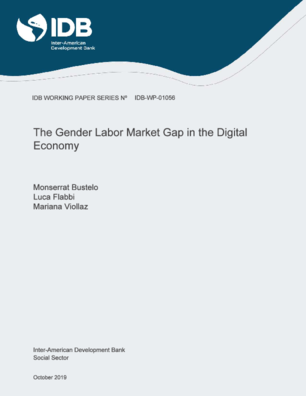The Gender Labor Market Gap in the Digital Economy
Date
Oct 2019
Recent years have seen an ever-greater expansion of the digital economy, a development that may bring new opportunities to workers who were at a disadvantage in the traditional economy. We focus on a specific set of workers who belong to such a group: women. We study a skill set of particular relevance in the digital economy and estimate their returns in the labor market, according to gender, across four Latin American countries. We find that information and communication technologies (ICT) skills and science, technology, engineering, and mathematics (STEM) skills yield significant positive returns for both men and women. However, there is a significant gender gap that favors men on the STEM returns. There is also a sizable gender gap regarding the amount of skills accumulated by gender. Through an Oaxaca-Blinder decomposition, we estimate that up to 80% of the gender gap in hourly wages may be due to the lower returns that women receive, relative to men, on their STEM skills. If an investment in skills relevant to the digital economy may be beneficial for the labor market performance of both men and women, why returns to STEM exhibit such strong gender asymmetries remains an open and relevant question.




